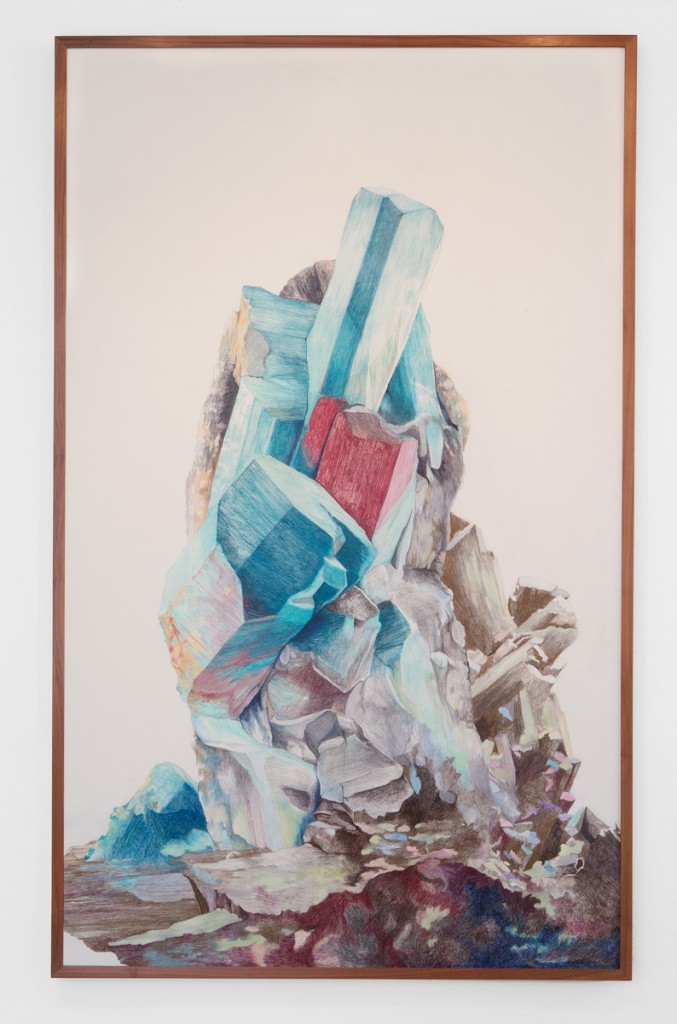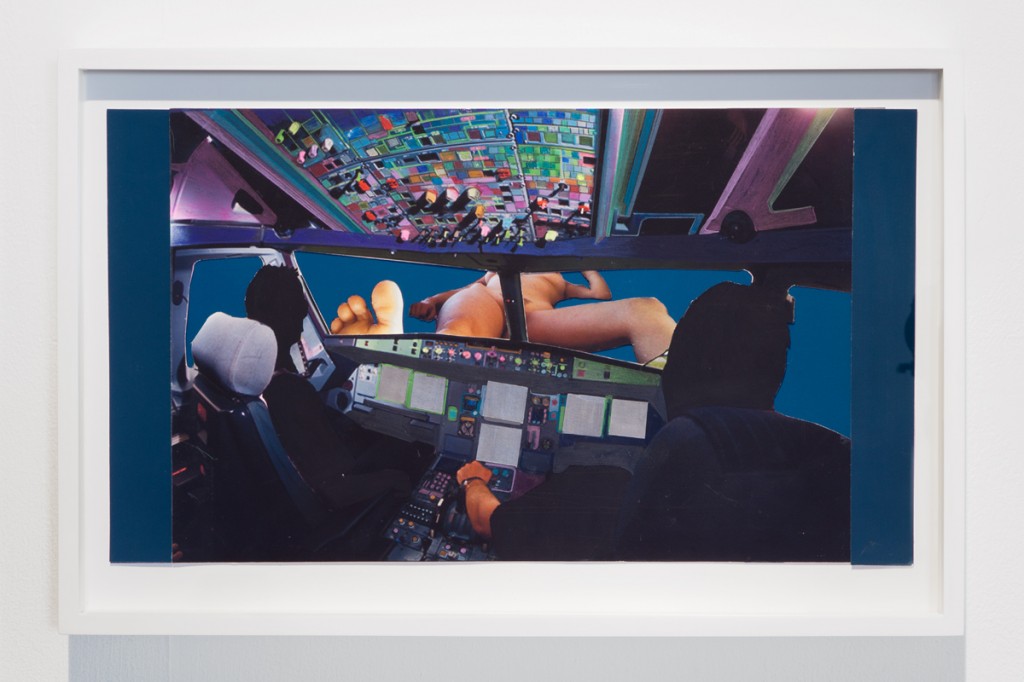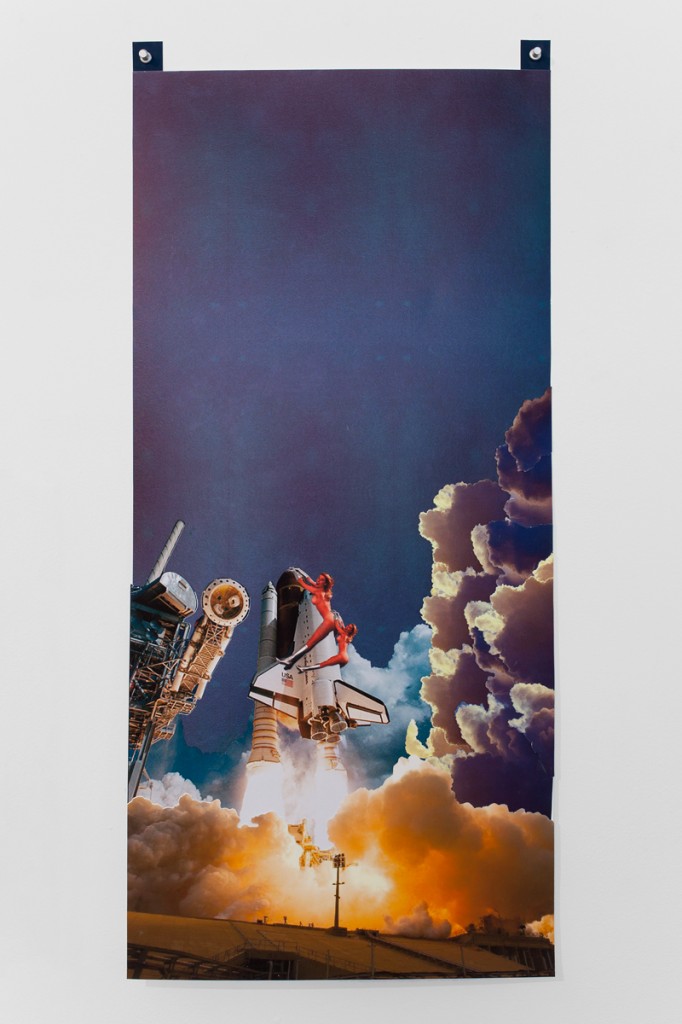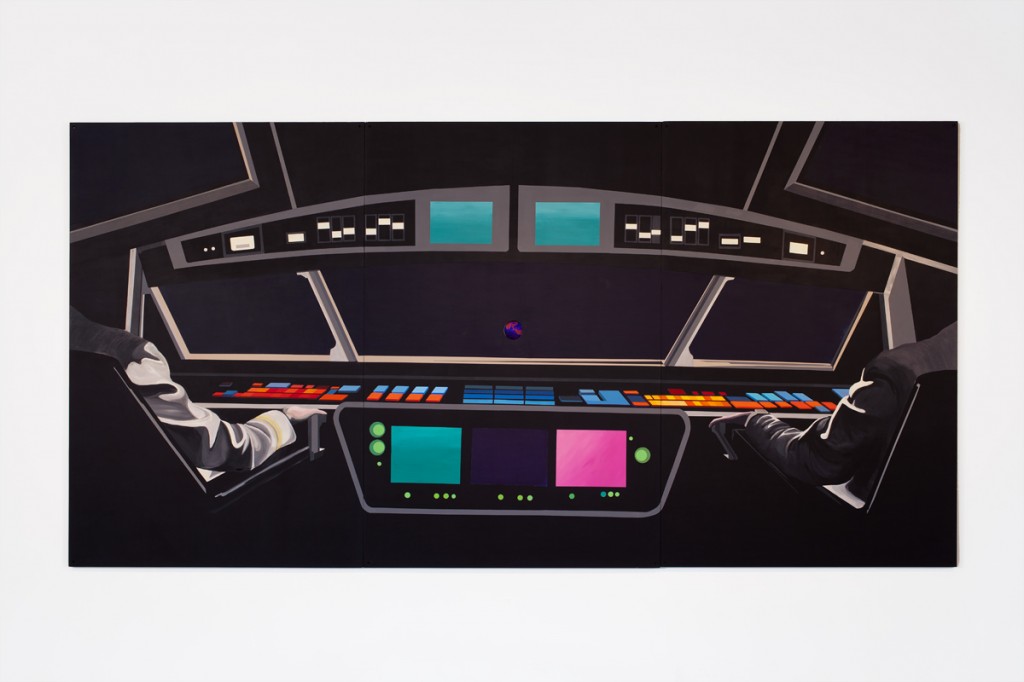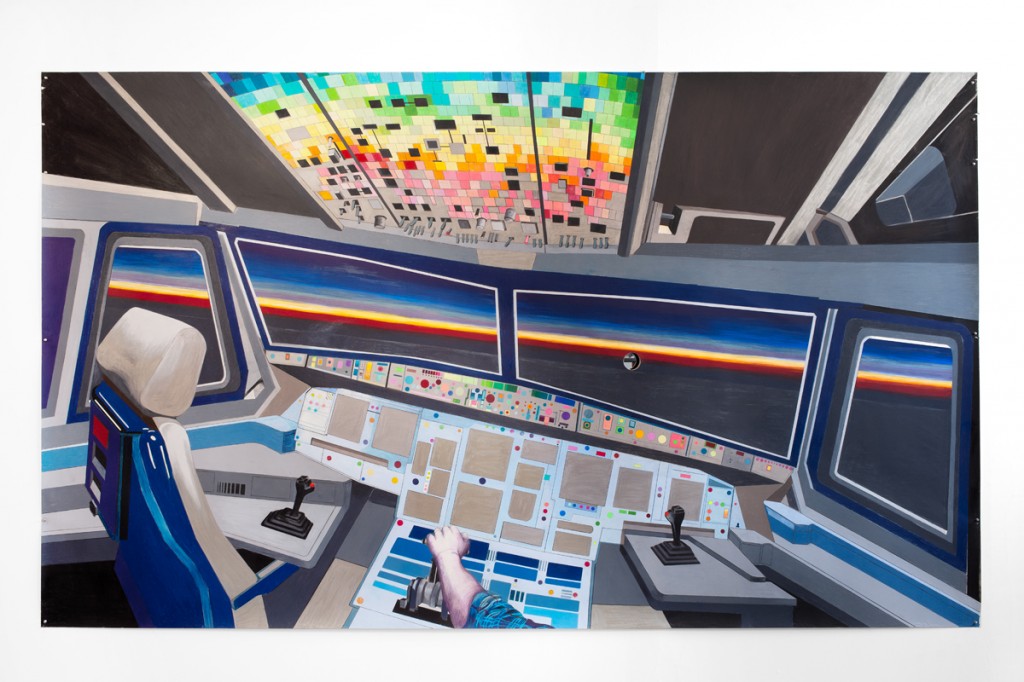Suzanne Wright’s Rainbow Control Room by Katherine Brewer Ball
|
“to wound the autumnal city Samuel Delany’s twisting science fiction novel Dhalgren (1975) begins with these lines. The nameless “Kid,” our protagonist, reads from an anonymous handwritten book he finds in the devastated apocalyptic city of Bellona. The verse continues, “All you know I know: careening astronauts and bank clerks glancing at the clock before lunch; actresses cowling at light-ringed mirrors and freight elevator operators grinding a thumbful of grease on a steel handle…” There is more to the “all you know, I know,” but the order and facticity of that shared knowing is never quite clear. Delany’s novel is full of false starts and stutters that must be repeated, remembered, forgotten, and misremembered. It is a novel that one reads over and over again, each time never quite managing to finish it. Wandering through the dark horizons and interstellar landscapes of Suzanne Wright’s latest series of drawings and collages, I search for my galactic knowledge and speculative beginnings. Wright’s work typically orbits around the spot where science fiction meets the erotic. Her plywood painting series “Galactic Glory Holes,” (2011-12) her large-scale color pencil drawings such as “Rainbow Highway” (2008) and “Choo-Choo,” (2004-5) and her collages of female-bodied landscapes in pleasure all imagine the absurd and genuine erotics of holes and portals. Starting over and entering back into recent work from Wright’s residency at Carnegie Mellon, I am reminded that the fantasy of the cosmos is crafted through both desire and belief. Each piece in “Rainbow Control Room” plays on 1970’s science fiction fantasies and their libidinal manifestations in space. Wright turns interstellar exploration back on the bodies and perspectives that imagine it. Sexy pin-ups are pulled out from under her parents’ bed and quietly examined from atop a sienna shag rug. Pudgy childsized hands slowly flip through pages that depict women in the throws of ecstasy while Barbarella plays on the teevee. “All you know I know: careening astronauts and bank clerks glancing at the clock before lunch…” Like the prose-y riddles in Dhalgren, these large-scale colored pencil drawings and collages are not meant to be solved. Instead, these works ask questions and perplex; they are both humorous and survivalist as Wright imagines the queer world promised by the galactic and erotic fairytales of her youth. Amazonite, 2014
Colored pencil and graphite on paper
80″ X 50″
The magisterial colored-pencil “Amazonite” is a large crystal four-by-seven foot Missing Men, 2014
paint,colored pencil,photo collage on paper
14″ X 21″
In “Missing Men,” white cutout pilot heads appear in the foreground; one wears aviator glasses while the other rests his fleshy manila arm on the throttle. Any moment now they will attempt to touch down on the landing strip in front of them. Their collage control panel is colored in bright swaths of lime green, lavender, and aqua pencil. The paneling on the topside of the cockpit displays highlighted buttons, knobs and switches. “Missing Men” reads like a child’s coloring book, a wet dream, and virtual reality mock-up. Ship monitors reveal shades and tones instead of fine lines of balance and control. The gaze of the missing men has been excised and made redundant, irrelevant. The landscape is a naked body turned to the side, knee bent in protection and invitation. I can’t tell which way she is rolling, yawning, coming, or going. She is partially obscured by the fine metal line that bridges the nose of the plane. And instead of her face, we see a close-up of the underside of a well endowed toe. Double Trouble, 2014
photo collage
30″ X 14
“Double Trouble” takes off from “Missing Men” with a gleefully nude woman headed into the great beyond. Her white pleather gloved hands and silver knee-high boots grasp onto her NASA space shuttle as she looks back at the viewer in ecstatic glee. The thrill of the ride into the unknown, her orgiastic straddle, and the white billowing heat of the engines propel her onward. She may not know where she is going, but she seems to be telling us that pleasure doesn’t always need a destination. She is not Delany’s “careening astronauts […] glancing at the clock before lunch…” but is perhaps showing us something about getting out beyond the logic of the clock, of productive and capitalist time. Slightly askew, the horizon of “Disco Cockpit” sits center stage. Just below the gold and burgundy lines that orient the viewer is a hole. This is not the moon, but an opening, a spotlight on an empty stage, an orb. The ship turns and a body just beyond view guides the way. Maybe the figure is you. Atari joysticks frame the controller clutched by our guiding arm and its blue flannel shirt. This is not the same arm from “Missing Men,” but a new captain, an empty stage. Later in Dhalgren, as Kid continues reading his found journal he muses: “This was like reading lines that echoed some conversation he might have followed idly once on a crowded street. The book hinted he pay attention to part of his mind he could not even locate.” The orb on Wright’s skyline recalls the architecture of the glory hole, only this time it is transposed onto the horizon, the elsewhere. The term “glory hole” originated in the nineteenth century to describe the space of punishment for misbehaving children or seamen. In “Rainbow Control Room,” the glory hole persists, but the erotic surprise on the other end is not simply one of filthy and anonymous contact. Viewers stand in line with the ghostly ship crew clutching the large arms of their command posts. We sit with, peering though and waiting to see what will happen next, who will come through the glory hole. Rainbow Control Room (2001 Space Odyssey), 2014
acrylic & vinyl flash paint on birch panels
triptych: 72″ x 144″
Each image projected beyond the architectural space of the hole depicts another world, a world José Muñoz might call a “not yet here,” a “not yet queer.” Wright’s collaborators envision their own Barbarella straddling amazon, their own utopian adventure assembled through the textures of the video screen. As I watch these careening visions through the space of the 3-inch glory hole I try to pay attention to the lost and found part of my mind. I try to locate the echo of a conversation you and I once heard on the empty abandoned street of outer space, or in the filthy crowded bathroom cockpit. Disco Cockpit, 2014
colored pencil and oil on paper
80″ X 137
Photographs by Sharon Molloy
Images courtesy of Suzanne Wright and Commonwealth and Council
Katherine Brewer Ball is a writer and curator who was born under an aires sun and libra moon. She is currently working on a book project on the political promise of escape and escapism in contemporary queer visual art entitled, “The Only Way Out Is In.” In 2013 she received her PhD in Performance Studies from New York University’s Tisch School of the Art. She is a Visiting Assistant Professor at Wesleyan University .
|
